
Benjamin Disraeli, 1st Earl of Beaconsfield, was a British statesman, Conservative politician and writer who twice served as Prime Minister of the United Kingdom. He played a central role in the creation of the modern Conservative Party, defining its policies and its broad outreach. Disraeli is remembered for his influential voice in world affairs, his political battles with the Liberal Party leader William Ewart Gladstone, and his one-nation conservatism or "Tory democracy". He made the Conservatives the party most identified with the British Empire and military action to expand it, both of which were popular among British voters. He is the only British Prime Minister to have been born Jewish.

Victoria was Queen of the United Kingdom of Great Britain and Ireland from 20 June 1837 until her death in 1901. Her reign of 63 years and 216 days—which was longer than those of any of her predecessors—constituted the Victorian era. It was a period of industrial, political, scientific, and military change within the United Kingdom, and was marked by a great expansion of the British Empire. In 1876, the British Parliament voted to grant her the additional title of Empress of India.

Prince Albert of Saxe-Coburg and Gotha was the husband of Queen Victoria. As such, he was consort of the British monarch from their marriage on 10 February 1840 until his death in 1861. Victoria granted him the title Prince Consort in 1857.
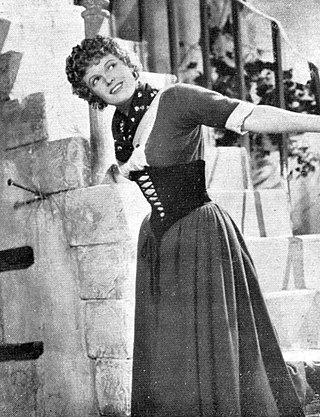
Dame Florence Marjorie Wilcox, known professionally as Anna Neagle, was an English stage and film actress, singer, and dancer.
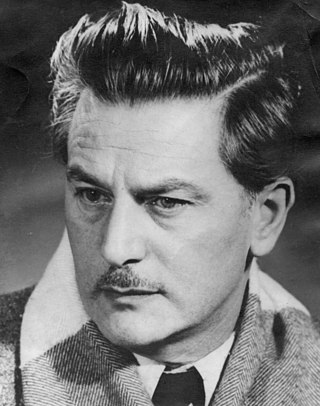
Adolf Anton Wilhelm Wohlbrück was an Austrian actor who settled in the United Kingdom under the name Anton Walbrook. A popular performer in Austria and pre-war Germany, he left in 1936 out of concerns for his own safety and established a career in British cinema. Walbrook is perhaps best known for his roles in the original British film of Gaslight, The Life and Death of Colonel Blimp, The Red Shoes and Victoria the Great.

Christian Friedrich Freiherr von Stockmar was a German physician and statesman, who was a leading player in the affairs of the United Kingdom under Queen Victoria.
The Peelites were a breakaway political faction of the British Conservative Party from 1846 to 1859. Initially led by Robert Peel, the former Prime Minister and Conservative Party leader in 1846, the Peelites supported free trade whilst the bulk of the Conservative Party remained protectionist. The Peelites later merged with the Whigs and Radicals to form the Liberal Party in 1859.

The Bedchamber crisis occurred on 7 May 1839 after Whig politician William Lamb, 2nd Viscount Melbourne declared his intention to resign as Prime Minister of the United Kingdom after a government bill passed by a very narrow margin of only five votes in the House of Commons. Following a few false moves toward an alternative Tory prime minister and a Conservative government, Lord Melbourne was reinstated until the 1841 election, when the Conservative party took over.
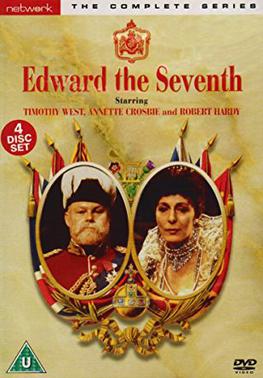
Edward the Seventh is a 1975 British historical drama series, made by ATV in 13 episodes.

I and Albert is a 1972 musical by composer Charles Strouse, and lyricist Lee Adams, with a book by Jay Presson Allen. The plot is based on the lives and love story of Queen Victoria and her husband Prince Albert of Saxe-Coburg and Gotha.
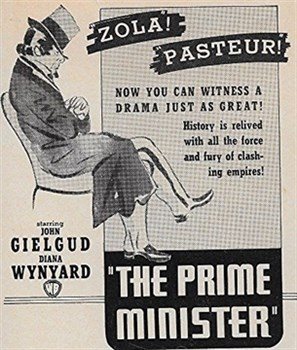
The Prime Minister is a 1941 British historical drama film directed by Thorold Dickinson and starring John Gielgud, Diana Wynyard, Fay Compton and Stephen Murray.

Herbert Sydney Wilcox CBE was a British film producer and director.

The Young Victoria is a 2009 British period drama film directed by Jean-Marc Vallée and written by Julian Fellowes, based on the early life and reign of Queen Victoria, and her marriage to Prince Albert of Saxe-Coburg and Gotha. Produced by Graham King, Martin Scorsese, Sarah Ferguson, and Timothy Headington, the film stars Emily Blunt, Rupert Friend, Paul Bettany, Miranda Richardson, Harriet Walter, Mark Strong, and Jim Broadbent among a large ensemble cast.
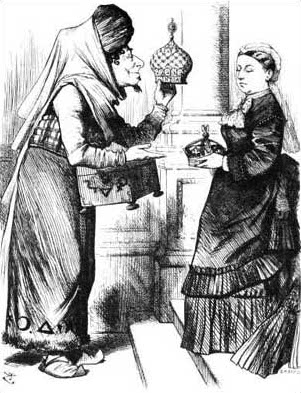
Queen Victoria has been portrayed or referenced many times.

Victoria & Albert is a 2001 British-American historical television serial. It focused on the early life and marriage of Queen Victoria and Prince Albert. The series starred Victoria Hamilton as Victoria, Jonathan Firth as Prince Albert and Peter Ustinov as King William IV. It was directed by John Erman.

Sixty Glorious Years is a 1938 British colour film directed by Herbert Wilcox. The film is a sequel to the 1937 film Victoria the Great.
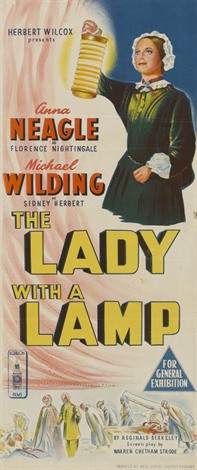
The Lady with a Lamp is a 1951 British historical drama film directed by Herbert Wilcox and starring Anna Neagle, Michael Wilding and Felix Aylmer. The film depicts the life of Florence Nightingale and her work with wounded British soldiers during the Crimean War. It was shot at Shepperton Studios outside London. Location shooting took place at Cole Green railway station in Hertfordshire and at Lea Hurst, the Nightingale family home, near Matlock in Derbyshire. The film's sets were designed by the art director William C. Andrews. It is based on the 1929 play The Lady with a Lamp by Reginald Berkeley.

Lilacs in the Spring is a 1954 British musical film directed by Herbert Wilcox and starring Anna Neagle, Errol Flynn and David Farrar. The film was made at Elstree Studios with sets designed by the art director William C. Andrews. Shot in Trucolor it was distributed in Britain by Republic Pictures. It was the first of two films Neagle and Flynn made together, the other being King's Rhapsody. It was released in the United States as Let's Make Up.

Victoria in Dover is a 1936 German romantic comedy film directed by Erich Engel and starring Jenny Jugo, Olga Limburg and Renée Stobrawa. It is based on a play by Geza Silberer. It was shot at the Babelsberg Studios in Potsdam and the Tempelhof Studios in Berlin and premiered at the city's Gloria-Palast. The film was remade in 1954 with Romy Schneider.

Victoria is a British historical television drama series created and principally written by Daisy Goodwin, starring Jenna Coleman as Queen Victoria. The series premiered in the United Kingdom on ITV on 28 August 2016 with eight episodes, and in the United States on PBS on 15 January 2017; PBS supported its production as part of the Masterpiece anthology. The series follows Victoria's early life, including her relationship with her husband Albert and her political responsibilities of the 1830s to the 1850s.



















